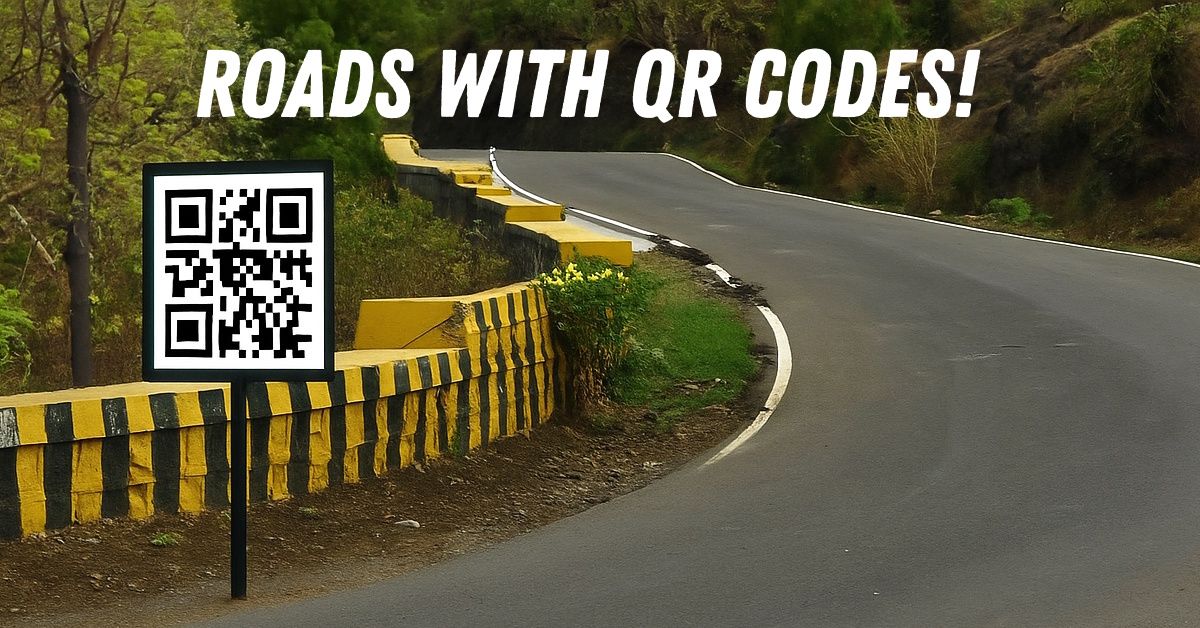These Roads Will Get QR Codes - This Is Why


A new initiative is quietly unfolding on rural roads, one that blends grassroots feedback with simple technology. Select stretches under the Pradhan Mantri Gram Sadak Yojana (PMGSY) will now feature QR codes installed along the roadside, inviting passersby to scan and rate the condition of the roads. At first glance, this may seem like a low-key experiment in public participation, but it could end up being a powerful tool to hold contractors and officials accountable for how well these roads are built and maintained.
The Ministry of Rural Development is piloting this programme in states like Uttar Pradesh and Madhya Pradesh, where QR-coded signboards are being placed on PMGSY roads after construction is completed. Any citizen with a smartphone can scan the code and submit direct feedback on road quality, durability, and usability. The move signals a shift from passive audits to community-powered monitoring, something that has long been missing in public infrastructure management.
Until now, most of the quality checks on rural roads have relied on internal audits, inspection reports, and paper trails. These processes, while important, often fail to capture the everyday realities that villagers, cyclists, and drivers face on these roads. A newly built road might look fine during inspection but could develop potholes after the first monsoon. With QR codes, road users themselves become part of the inspection process.
By encouraging real-time public reviews, the government is creating a feedback loop that extends well beyond the construction phase. And unlike surveys or helplines, scanning a QR code is quick, accessible, and location-specific. The system also allows users to upload photos, which can be critical in flagging specific trouble spots.
There’s merit in the idea, but it will depend heavily on implementation. For one, smartphone penetration in rural areas is growing but not universal. While urban and semi-urban pockets may respond well, more remote villages may need additional awareness and access support. Moreover, people may hesitate to report problems due to local political pressures or fear of backlash from contractors.
There’s also the issue of what happens after feedback is submitted. Will the Public Works Department take visible action on poor ratings? Will contractors be penalised or blacklisted based on recurring complaints? Without a transparent and timely response system, the QR codes risk becoming ornamental rather than impactful.
Still, some state governments are already reporting promising signs. In districts where QR codes have been in place for a few months, local officials say they’re receiving more targeted complaints and are better able to prioritise maintenance work. That in itself is a small but significant shift from reactive governance to responsive planning.
This QR code initiative represents more than just a tech gimmick. It’s a part of a broader effort to introduce accountability into rural development. In a country where roads are often a lifeline to schools, markets, and hospitals, the ability to assess and influence their quality directly is empowering.
Even if only a fraction of users engage with the feature, it sets a precedent. Other infrastructure projects, such as rural electrification, water pipelines, or even bus stops, could follow suit. The integration of digital touchpoints with physical infrastructure can allow for smarter tracking, better planning, and reduced leakages in public expenditure.
If scaled well and supported by backend response systems, this approach could serve as a model for other road construction schemes as well, including those in urban zones or under the National Highways Authority. It could also encourage private contractors to be more mindful of build quality, knowing that their work is constantly under public review.
For now, the QR code system is a small experiment with large implications. It puts a degree of control in the hands of those who walk, ride, and drive these roads every day. If nothing else, it signals that feedback is no longer a one-way street.